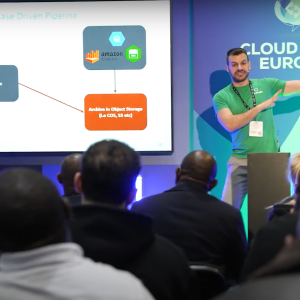
Earlier this decade, Gartner’s Nexus of Forces model predicted how the convergence of four key trends – social, mobility, cloud and information patterns – would drive an era of digital transformation that would scale beyond the enterprise to connect people, processes and technologies in new and disruptive ways.

Since then, the unprecedented scale and pace of digital transformation has impacted organisations of all sizes and in every sector. Today’s mobile workforces can now connect, share information and collaborate seamlessly with anyone, anywhere, taking advantage of cloud-based applications to generate operational efficiencies and initiate new ways of working.
Meanwhile, the Internet of Things (IoT) is enabling new digital business models and ecosystems. The IoT will provide companies with never before available insight into their business operations, as well as their engagement with customers, partners and suppliers. These insights, and the ability to act on them quickly, will be necessary to drive growth, profitability and efficiencies in an increasingly competitive world. Competitive response times in the digital economy will need to be measured in minutes, not hours or days. As a consequence, organisations need to find new ways to cope with the exponential growth in both the number of connected ‘things’ and the data these will generate.
To compete successfully on this brave new digital stage organisations will need to re-architect highly centralised enterprise Wide Area Networks (WAN), initiating new network models that are designed with cloud, mobility, scalability and agility in mind.
The rise of the Connected Enterprise
In today’s interconnected world, corporate boundaries need to extend effortlessly beyond the enterprise’s four walls. The Edge of the enterprise network has moved out beyond the branch office or retail outlet. It needs to incorporate mobile workers, vehicles, pop-up and temporary networks, kiosks, cameras and sensors, to name a few. The enterprise network needs to effortlessly extend to where (and when) customers, partners, suppliers are engaged and where important operational data is produced.
The traditional branch-centric WAN was never designed to cope with the business demands of digital transformation. Highly complex and inflexible, they often inhibit business agility – and the business requirements the network needs to address are changing fast.
Enterprises looking to initiate new digital business models that connect people, places and things will need to transform their WANs to be more scalable, more secure, more reliable, more available, more automated and more agile to deploy.
That means enabling an increasingly fluid and flexible Network Edge – the Elastic EdgeSM – that constantly expands, contracts, adapts and evolves as business needs dictate. To achieve this elasticity, companies are turning to next-generation network technologies like the Software-defined WAN (SD-WAN) to simplify and automate the challenges of providing the best possible quality of service for key applications.
Read more: 7 of the most outrageous IoT devices
Providing the secure and pervasive connectivity for the Elastic Edge that the ‘Connected Enterprise’ needs, SD-WAN is the ideal framework for the network of the future. Offering cloud-based management and orchestration, increased availability and flexibility together with simplified business and application policies. Software-defined technologies are ideal for organisations that want the flexibility to take advantage of the next wave of digital transformation.
Also important to fulfilling the promise of the fluidity and flexibility provided by the Elastic Edge SM will be Wireless WAN. LTE, and soon 5G, will provide the performance, cost and agility profile that make them a no brainer for the enterprise WAN. It happened for the Local Area Network (WLAN), it is happening for the Personal Area Network (PAN, e.g. bluetooth) and it will happen for all the same reasons for the WAN. In many ways, the Wide-Area-Network is the ‘lifeline’ connecting the enterprise to the people, places and things that drive its business. In the fast paced digital economy a wired WAN will increasingly be more of a ‘leash’ than a ‘lifeline’.
On-demand network services
The way in which new WANs are being built and utilised is also changing. In recent years, the emergence of Cloud and Software Defined Networking (SDN) has fuelled a growing movement from traditional ‘build your own’ models to the take up of new solution architectures such as Network-as-a-Service (NaaS).
It is an approach that releases organisations from the burden of having to purchase networking hardware, equipment and carrier services and then build the network and run it. Instead, they are free to take advantage of a much more elastic consumption model in which capacity, connections and services can be spun up or down as required. Significantly, you only pay for what you use.
Read more: HPE & Citrix target Edge to the Core innovation
The network is becoming increasingly critical to the success of the Connected Enterprise. The ability to cope with digital transformation at the Edge will depend on having the ability to rapidly change, provision and configure the enterprise WAN.
Keeping up with the pace of digital transformation means organisations will need to accelerate the evolution of their WANs, enabling highly converged cloud and network infrastructures at the WAN Edge that feature the elasticity needed to deliver flexible and instant connection services, as well as on-demand delivery capabilities.
Shifting to an Elastic Edge makes it easy for Connected Enterprises to rapidly deploy and connect people, capacity and resources. It will also pave the way for the transition to a utility-based ‘network on-demand’ consumption model that makes it possible to switch on availability and services almost instantaneously.






